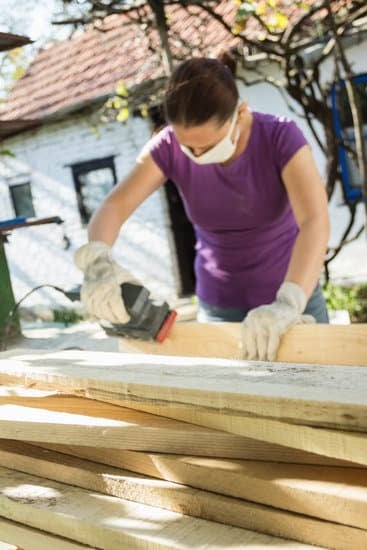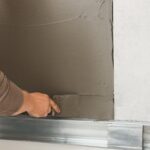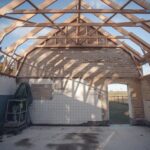What is considered a capital improvement to a home? Capital improvements are significant investments made in residential properties that have lasting benefits. Understanding what qualifies as a capital improvement is vital for homeowners looking to enhance their property’s value and navigate tax implications.
Homeowners often engage in various renovation projects to improve the aesthetics, functionality, and overall value of their homes. However, not all home improvements qualify as capital improvements. The distinction between regular repairs and maintenance and capital improvements is crucial for homeowners to comprehend.
In this article, we will delve into the concept of capital improvements, providing detailed examples of qualifying home improvements and outlining key factors that determine their classification. We will also explore the tax implications of capital improvements, exceptions to this categorization, methods for documenting these upgrades, and how they can impact property value. Understanding what constitutes a capital improvement is essential for homeowners seeking to make informed decisions about their property investments.
Examples of Common Capital Improvements
When it comes to making improvements to a home, it’s important for homeowners to understand what is considered a capital improvement. These types of improvements are typically significant and add value to the property. Some common examples of capital improvements include remodeling a kitchen or bathroom, adding a new roof, installing central air conditioning, and building an addition to the home.
- Remodeling a Kitchen or Bathroom: Completely renovating a kitchen or bathroom can be considered a capital improvement because it adds value to the home and is a significant upgrade. This can include replacing cabinets and countertops, installing new flooring, updating plumbing and electrical systems, and adding energy-efficient appliances.
- Adding a New Roof: Replacing an old or damaged roof with a new one is also considered a capital improvement. A new roof not only improves the appearance of the home but also protects it from potential damage caused by leaks or other roofing issues.
- Installing Central Air Conditioning: Upgrading a home’s cooling system by installing central air conditioning is another example of a capital improvement. This type of upgrade can increase the overall comfort of the home and is considered to add value in terms of property resale.
Impact on Property Value
| Capital Improvement | Property Value Impact |
|---|---|
| Remodeling Kitchen | Increase in value due to modern amenities |
| Adding New Roof | Increase in value due to improved curb appeal and protection |
| Installing Central Air Conditioning | Increase in value due to enhanced comfort and energy efficiency |
Key Factors in Determining Capital Improvements
When determining whether a home improvement project qualifies as a capital improvement, there are several key factors to consider. These factors play a crucial role in understanding the classification of a home improvement project and its implications for homeowners.
Nature of the Improvement
One of the key factors in determining whether a home improvement is considered a capital improvement is the nature of the improvement itself. Capital improvements typically involve significant alterations or additions that enhance the overall value or extend the useful life of the property.
This can include projects such as adding a new roof, installing central air conditioning, or remodeling a kitchen. On the other hand, routine repairs and maintenance, such as fixing leaks or repainting walls, are generally not considered capital improvements.
Cost and Duration
Another important factor to consider is the cost and duration of the home improvement project. Capital improvements often involve substantial financial investment and require an extended period to complete. These projects are typically more expensive and time-consuming than regular repairs or maintenance tasks. Additionally, capital improvements are expected to provide long-term benefits to the property, making them distinguishable from short-term fixes.
Impact on Property Value
The impact of a home improvement project on the overall value of the property is also a crucial consideration in determining whether it qualifies as a capital improvement. Projects that significantly increase the resale value of the home, such as adding an additional bedroom or upgrading to energy-efficient windows, are more likely to be classified as capital improvements.
Understanding how certain renovations can positively contribute to property value is essential for homeowners seeking to make strategic investments in their homes.
Considering these key factors when evaluating home improvement projects will help homeowners determine what is considered a capital improvement to their homes. It’s important for individuals to keep track of these factors when considering major renovation projects in order to make informed decisions about their properties’ long-term value and tax implications.
Tax Implications of Capital Improvements
When it comes to home improvements, it is crucial for homeowners to understand the tax implications of capital improvements. But what exactly is considered a capital improvement to a home? Generally, a capital improvement is any renovation or addition that adds value to a home, prolongs its useful life, or adapts it to new uses. This can include major projects such as adding a new room, remodeling the kitchen, installing new flooring, or making significant landscaping changes.
The tax implications of capital improvements are important for homeowners to consider, as these improvements can affect taxes and deductions. While regular home repairs and maintenance are not tax-deductible expenses, capital improvements can potentially reduce the amount of taxes owed when selling the property. This is because the cost of the improvements can be added to the home’s cost basis, which in turn reduces the taxable profit when the house is sold.
It is essential for homeowners to keep track of all their capital improvement expenses and maintain detailed records for tax purposes. Documentation should include receipts, invoices, contracts with contractors, and before-and-after photos of the renovations. By doing so, homeowners can ensure that they have the necessary information to accurately report their capital improvement expenses when filing their taxes.
| Capital Improvement | Tax Implications |
|---|---|
| Adding a new room | Potential reduction of taxes owed when selling the property |
| Remodeling the kitchen | Possible increase in the home’s cost basis |
| Installing new flooring | Opportunity to decrease taxable profit upon selling the house |
Notable Exceptions to Capital Improvements
When it comes to determining what is considered a capital improvement to a home, there are certain situations and home improvements that do not qualify as capital improvements. It is important for homeowners to be aware of these exceptions in order to properly classify their home improvement projects.
Some notable exceptions to capital improvements include:
- Routine Repairs: Regular maintenance and repairs, such as fixing a leaky faucet or replacing broken window panes, are not considered capital improvements. These are considered day-to-day upkeep and do not add significant value to the property.
- Cosmetic Enhancements: While cosmetic upgrades like painting the walls or adding new wallpaper can improve the aesthetic appeal of a home, they are generally not classified as capital improvements. Unless these enhancements are part of a larger renovation that substantially increases the value of the property, they do not meet the criteria for capital improvements.
- Personal Use Additions: Any additions or modifications made to a home primarily for personal use and enjoyment, such as adding a swimming pool or building a personal hobby studio, may not be considered capital improvements. These types of enhancements are seen as discretionary and may not contribute significantly to the overall value of the property.
It is important for homeowners to understand these exceptions in order to make informed decisions about their home improvement projects. By knowing what does not qualify as a capital improvement, homeowners can avoid potential misunderstandings when it comes to tax implications and property value assessments. Additionally, being aware of these exceptions can help homeowners prioritize which projects will truly benefit their home in the long term.
How to Document Capital Improvements
When it comes to making capital improvements to a home, proper documentation is crucial for homeowners. Keeping detailed records of home improvement projects can not only help with future maintenance and repairs but also play a significant role when it comes to taxes and property value.
Methods for Documenting Capital Improvements
One of the most effective ways to document capital improvements is by keeping all receipts and invoices related to the project. This includes materials, labor costs, permits, and any other expenses incurred during the renovation. Homeowners should also make sure to keep a record of any before and after photos, as visual evidence can be valuable when documenting the improvement.
Another way to document capital improvements is by maintaining a home improvement journal or log. In this log, homeowners can record important details such as the date of the improvement, description of the work done, names of contractors or service providers involved, and any relevant warranties or guarantees for the improvement.
Importance of Detailed Records
The significance of keeping detailed records of capital improvements cannot be overstated. Not only can these records provide peace of mind for homeowners in terms of future maintenance and repairs, but they also play a crucial role in determining tax implications and property value.
Without proper documentation, homeowners may not be able to take advantage of potential tax deductions related to their capital improvements. Additionally, when it comes time to sell their property, detailed records can help justify an increase in resale value.
Impact of Capital Improvements on Property Value
Capital improvements can have a significant impact on the overall value of a home. When considering what is considered a capital improvement to a home, it’s essential for homeowners to understand how these improvements can affect the resale value of their property. By making strategic and valuable upgrades to their homes, homeowners can potentially increase their property’s value and attract more potential buyers in the future.
One key factor in determining the impact of capital improvements on property value is the quality of the renovations or upgrades. For example, a newly remodeled kitchen with high-quality materials and modern appliances can greatly enhance the appeal and value of a home.
Similarly, adding an additional bathroom or bedroom can increase the overall square footage, making the property more desirable to potential buyers. These types of improvements are generally considered capital improvements because they add long-term value to the property.
It’s also important to note that certain capital improvements may have a greater impact on property value based on location and market demand. For instance, adding energy-efficient features such as solar panels or upgrading to eco-friendly materials may be particularly appealing in areas where sustainability is highly valued.
Understanding these factors can help homeowners make informed decisions about which capital improvements are most likely to yield a higher return on investment when it comes time to sell their home.
In addition, it’s crucial for homeowners to consider how capital improvements align with current market trends and buyer preferences. Staying informed about popular home design trends and amenities can help homeowners make informed decisions about which improvements will have the greatest impact on their property’s value. Ultimately, understanding the relationship between capital improvements and property value is essential for homeowners who want to make smart investments in their homes for both personal enjoyment and long-term financial gain.
Conclusion
In conclusion, understanding what is considered a capital improvement to a home is essential for homeowners for various reasons. Capital improvements not only add value to a property but also have tax implications that can affect the homeowner’s financial situation. By knowing what qualifies as a capital improvement and documenting these projects properly, homeowners can potentially benefit from tax deductions and increased property value in the long run.
It is crucial for homeowners to be aware of the key factors that determine whether a home improvement project classifies as a capital improvement. Factors such as the longevity of the improvement, its impact on the property value, and its necessity for the property are important considerations. Additionally, keeping detailed records of these improvements is essential for tax purposes and to showcase the added value when selling the property in the future.
Ultimately, understanding capital improvements can significantly impact a homeowner’s financial well-being. Appropriate documentation and knowledge of what qualifies as a capital improvement play a vital role in maximizing the benefits of home renovations and ensuring that homeowners can make informed decisions about their properties. By being well-informed, homeowners can make strategic choices when it comes to improving their homes and securing their financial future.
Frequently Asked Questions
What Are Examples of Capital Improvements?
Examples of capital improvements include renovations to a home such as adding a new room, upgrading the kitchen or bathrooms, installing a new roof, or adding a swimming pool. These are long-term investments that enhance the property.
What Does the IRS Consider Capital Improvements on Home?
The IRS considers capital improvements on a home to be those that add value to the property, prolong its useful life, or adapt it to new uses. This includes expenses for permanent improvements like a new heating system or insulation.
Is a New Refrigerator a Capital Improvement?
A new refrigerator is typically not considered a capital improvement by the IRS because it is not permanently affixed to the property and does not increase its value in the same way that structural changes or major upgrades do. Instead, it is generally considered a maintenance expense.

I’m thrilled to have you here as a part of the Remodeling Top community. This is where my journey as an architect and remodeling enthusiast intersects with your passion for transforming houses into dream homes.





